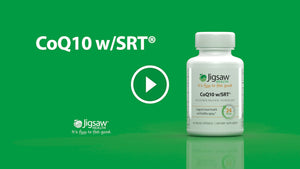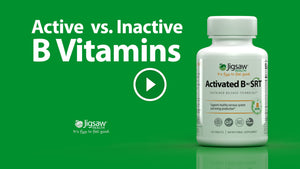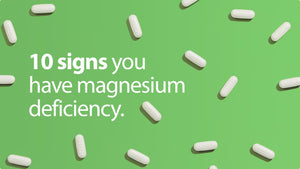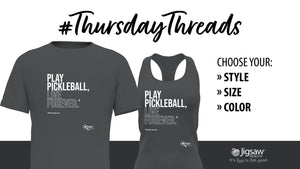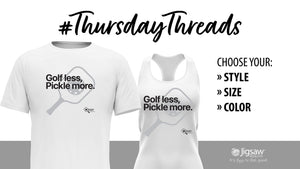How to Choose Healthy Foods
Before you put your favorite food items in your shopping cart, there are a few things you should know about the ingredients in those foods. By closely examining the ingredients labels, you’ll be making healthier choices that will help you feel better, and stay better.
Ingredients are listed in descending order. The FDA requires that food manufacturers provide labels on their foods that list all the ingredients in descending order according to their weight. The most heavily used ingredients are listed first. Ingredients of lesser amounts are found towards the end of the list.
Warnings. Starting January 1, 2006, the FDA will require warning labels for all food products that may contain or come in contact with food allergens. For example, food manufacturers need to disclose whether or not their foods contain or come in contact with peanuts (due to the life-threatening allergic reaction in some people to peanuts).
Also starting January 1, 2006, the FDA will require that all food products list the amount of trans fats in the
nutrition facts box.
Watch Out for Ingredients that Can Cause Problems
If you’re suffering from a chronic condition (or want to avoid developing one), you should be aware of food ingredients that can cause health concerns.
Artificial colors. Artificial colors are synthetic substances that have no nutritional value. In most cases, artificial colors are used to imitate “real” whole foods, such as strawberries, oranges, blueberries, and other colorful fruits. Artificially colored products are often marketed to children who are attracted to bright, fancy colors. In some cases, artificial colors may cause neurological symptoms such as hyperactivity in children, while other people may be allergic or sensitive to these substances.
Artificial colors include: FD&C Blue Nos. 1 and 2, FD&C Green No. 3, FD&C Red Nos. 3 and 40, FD&C Yellow Nos. 5 and 6, Orange B, and Citrus Red No. 2.
Note: FD&C yellow #5 can produce severe allergic reactions, particularly in aspirin-sensitive people. Federal law specifies it be labeled this way.1
Artificial and imitation flavors. Some of the more common artificial flavors include artificial butter, imitation vanilla (vanillin), cherry, banana, raspberry, lemon, and many other flavors. These are synthetically developed, and are likely to contain unhealthy contaminants originating from the manufacturing process.
1
Artificial sweeteners. These replace refined sugars, because they can provide the same sweetness as sugar—without the calories. Although they may sound reasonable, artificial sweeteners can trigger an array of neurological symptoms, and can, in many cases, aggravate a chronic condition.
There are six low-calorie artificial sweeteners currently approved by the FDA for use in the United States. These are acesulfame potassium (Ace-K), aspartame, neotame, saccharin, sucralose, and tagatose.
2 Brand names include Splenda®, Nutrasweet®, Sweet’N Low®, and Equal®.
Artificial sweeteners are considered excitotoxins—chemical substances that can damage neurons in the brain. Health complaints regarding consumption of artificial sweeteners can include: headaches, migraines, seizures
3, panic attacks, depression, bipolar disorder, memory problems, and other mental symptoms.4
Recent research also suggests that artificial sweeteners trick the body to associate sweetness with zero calories. As a result, cravings for “real sugar” go up, and there’s a tendency to overeat the “real stuff” since the body no longer has a mechanism in place to associate sugar with a sense of feeling full.
5So, you may be defeating the purpose of eating fewer calories by replacing real sugar with artificial sweeteners.
Dairy derivatives. For those who are allergic to dairy products, be careful of products that claim to be non-dairy. Coffee creamers, for example, contain a milk derivative called casein or caseinate. Due to misleading labeling, a new FDA rule requires casein and caseinate to be identified as milk derivatives in the ingredient statement when used in foods claiming to be non-dairy.
6
Emulsifiers, stabilizers, thickeners, and fat replacements. There are many food ingredients used to emulsify, thicken, and stabilize food products. They are also used as fat replacements in many cases because they provide fullness and texture to foods, much in the same way that real fat does. You’ll find them in creamy products like low-fat and fat-free yogurt, sour cream, milk, ice cream, mayonnaise, and salad dressings. Other applications include baked goods, spreads, sauces, frostings, fillings, processed meat, frozen desserts, extruded products and beverages.
Although many of these agents are considered natural products because they come from plant sources, some of them, such as carrageenan and olestra (Olean
®), may irritate the gastrointestinal tract and cause problems for those who suffer from chronic digestive conditions.
It’s best to avoid fat replacements altogether, and instead, moderate your intake of healthy fats as part of a high-quality, whole food diet. Keep in mind that eating fat, in and of itself, does not cause you to gain weight. Therefore, purchasing low-fat items that are usually high-carb foods may not be the best idea for optimal health. Overeating low-fat, high-carb foods may actually be the true culprit in obesity, not fat.
Monosodium glutamate. Known as MSG, this flavor enhancer causes what many people know as the “Chinese Food Syndrome.” MSG can produce headaches and/or migraines, asthma, nausea, fatigue, and depression in people who are sensitive to it. Studies suggest that MSG may be a “slow neurotoxin” in that it doesn’t produce immediate damage, but has long-term detrimental effects. It has been found to kill brain cells in laboratory animals.
7 Those who are sensitive to MSG should avoid it entirely.
Processed oils. These should be avoided, due to the production of trans fatty acids during the manufacturing process. Better choices would include monounsaturated oil such as extra virgin olive oil, and a moderate intake of saturated fat such as
organic virgin coconut oil.
Brominated vegetable oil. These are added to carbonated beverages, especially citrus-based sodas, like orange soda. Bromine is added to oil, which offers a thicker appearance to many sodas. Bromine cannot be easily expelled from the body and accumulates in fat cells. It has been shown to cause thyroid, kidney, and liver dysfunction in rats.
Hydrogenated or partially hydrogenated oils. These types of oils are produced by hydrogenating oil, a process which produces unhealthy trans fatty acids. Eliminate all food products from your diet that contain hydrogenated oils or partially hydrogenated oils.
White refined flour. Stripped of its fiber and essential nutrients, white refined flour is a high-glycemic food that spikes blood sugar levels. White refined flour is found in many processed foods, baked goods, snacks, and breads. Furthermore, be careful when choosing whole wheat products, since many of these add molasses to white flour to create the familiar brown wheat color. Refined flour should be avoided entirely for those who are struggling with
Candida, insulin resistance, hypoglycemia, diabetes, and obesity since it can cause yeast overgrowth, weight gain, and spiked blood sugar levels.
Refined sugar. Currently, refined sugar is the most heavily used of all food ingredients in the United States. It is found in foods you wouldn’t even suspect, including fried food, hamburgers, tomato sauce, canned vegetables, and salsa, just to name a few. The American sugar consumption is at an all-time high, while incidence of chronic conditions and degenerative diseases such as diabetes, obesity, heart disease, and hypertension are skyrocketing. Though sugar is not the sole culprit for poor health, excessive sugar and/or artificial sweetener consumption in the typical American diet is a major contributing factor to many chronic health conditions.
9
Sodium nitrite/nitrate. These additives preserve the red color in meat (otherwise meat would turn gray, which is not appealing to consumers). Sodium nitrite reacts with stomach acid to produce nitrosamines—substances that have been shown to cause issues in animals when consumed in large quantities.
10 Sodium nitrite may increase the risk of brain tumors and leukemia for those who regularly consume this additive.11According to the Center for Science in the Public Interest (CSPI), food manufacturers now add ascorbic acid or erythorbic acid to bacon to inhibit nitrosamine formation, a measure that has greatly reduced the problem. However, CSPI still recommends avoiding this ingredient entirely.
Soy. Soy has found its way into virtually all processed foods, making it almost impossible to weed out of the diet. Certain people have life-threatening allergic reactions to soy, and others simply need to avoid foods such as soy that increase estrogen (especially those who suffer from hormonal imbalances). Soy may be a contributing factor in many chronic conditions, especially chronic digestive disorders.
Soy-based infant formulas may cause permanent damage to an infant’s gastrointestinal tract, so they should not be considered as the alternative to breastfeeding.
12
Trace ingredients, incidental additives, proprietary spice blends, natural and artificial flavors, and colors. The FDA does not require a breakdown of ingredients in cases where a “company blend” is proprietary, or in cases where a trace ingredient is insignificant to the overall food product. Some ingredients may not be fully disclosed to protect a company’s secret formula.
13 If you’re trying to avoid a particular ingredient, use caution when you see these types of generic statements on ingredients labels, because you don’t really know what these secret formulas and blends may contain.
Your Best Bet for Quality Eating
When shopping for healthy food products for you and your family, remember these helpful tidbits:
- Do the majority of your shopping along the perimeter of your grocery store. Fresh and refrigerated whole foods are found along the outer aisles, while heavily processed, packaged foods are found towards the center aisles.
- Increase the amount of raw foods in your daily diet. When you cook food, you destroy many essential vitamins, amino acids, and enzymes. Also, be sure to lightly cook your food, rather than overheat, overcook, and overgrill.
- Choose fresh instead of processed foods. Foods that spoil quickly are better for your health, because they are more bioavailable, more easily digested, and provide many naturally occurring vitamins, minerals, and amino acids.
- The shorter the ingredients list, the better. Avoid food products that have long lists of ingredients. They tend to be loaded with unhealthy, artificial additives and preservatives. Choose food products that have whole, nutrient-dense, natural ingredients.
- Avoid all food products that have artificial ingredients on their packaging.
- Check the expiration date on all foods, particularly beef, poultry, and fish. Make sure that you’re always purchasing the freshest products. If necessary, choose the food products in the back of the display case, rather than the older food products that tend to be pushed up to the front.
Cited Sources:1) “CSPI’s Guide to Food Additives,” CSPI
http://www.cspinet.org/reports/chemcuisine.htm
Accessed August 2005
2) “Sugars and Low-calories Sweeteners,” International Food Information Council
http://ific.org/nutrition/sugars/index.cfm
Accessed August 2005
3) “Aspartame Strongly Associated with Migraines and Seizures,” Newstarget.com
http://www.newstarget.com/008797.html
Accessed August 2005
4) “The Connection between Aspartame (Artificial Sweetener) and Panic Attacks, Depression, Bipolar Disorder, Memory Problems, and Other Mental Symptoms,” International Guide to the World of Alternative Mental Health
http://www.alternativementalhealth.com/resources/...
Accessed August 2005
5) “Artificial Sweeteners May Damage Diet Efforts: Sugar Substitutes May Distort the Body's Natural Calorie Counter,” WebMD.com
http://my.webmd.com/content/article/89/100381.htm...
Accessed August 2005
6) Ingredient Labeling: What’s in a Food? Food and Drug Administration
http://www.fda.gov/fdac/special/foodlabel/ingred....
Accessed August 2005








